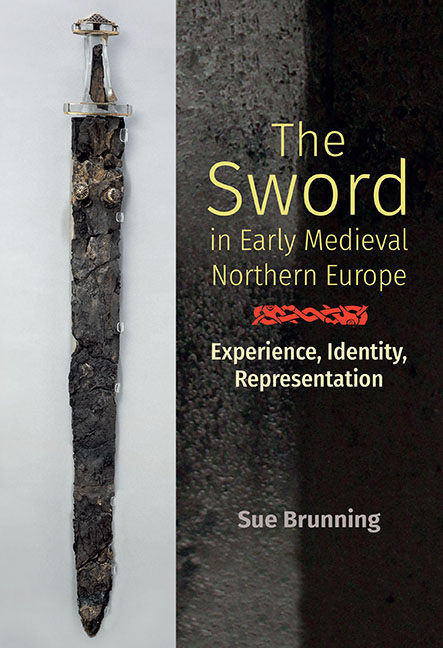Summary
In early medieval northern Europe, swords were not everyday artefacts. Not all families had one in their home, like a knife or a pottery vessel. Many probably never even saw one in real life. Swords were owned, experienced and encountered by a limited number of people, who themselves were members of limited social groups and participated in limited social activities. This exclusivity has helped to fuel the enduring scholarly view that the sword's primary symbolic meaning was as an emblem of elite status; but such a reading overlooks an issue that has emerged as a thematic touchstone in this book: while the physical ownership of swords was restricted, recognition of their purpose and significance was not. Tales of great swords, made by gods and wielded by heroes, were recited in communities throughout the early medieval North, from humble dwellings to soaring timber halls. The muted relics of these stories echo in the ‘Dancing Warriors’ on the Sutton Hoo helmet, the words of Beowulf and perhaps in ancient swords buried in furnished graves. One did not have to own a sword to understand something of its relevance and meaning in society: indeed, most inhabitants of modern northern Europe are not sword owners, but they know what Excalibur is. By exploring the thoughts of those whose views were shaped not only by ownership of swords, but also by stories and images of swords, this book has unveiled a more complex picture of these weapons’ place in the society and worldview of early medieval northern Europe.
One sign of this complexity is that while swords were relevant to various social groups – warrior and civilian, secular and ecclesiastical, male and female, and all shades of grey in between – their relevance was not homogeneous. Multiple conceptualisations of swords existed, reflected in the varying attention given to specific sword parts in imagery, poetry and funerary rituals; and for women, swords were attributes in exceptional circumstances only, their symbolism emphasising the weapon's protective rather than aggressive qualities. The sword's deepest significance, and most intense relationship, involved warriors, defined here as a social status rather than a function. Swords were a cornerstone of early medieval warrior identity, expressing and constructing it both in art and in life; and elevating sword-wielders above other warriors to the pinnacle of a perceived hierarchy of fighters.
- Type
- Chapter
- Information
- The Sword in Early Medieval Northern EuropeExperience, Identity, Representation, pp. 157 - 158Publisher: Boydell & BrewerPrint publication year: 2019



